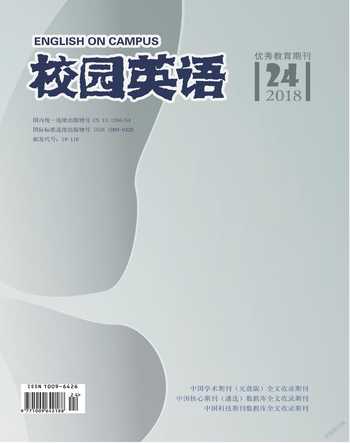Text analysis from a functional perspective
【Abstract】Text can be analyzed from many perspectives, functional perspective is one of them. This article makes an introduction to functional analysis and makes a try in how to use it in language teaching.
【Key words】functional perspective; English teaching
【作者簡介】陈斌梅,南京工程学院外语系。
I. Introduction
Functional grammar, viewing language as a resource for making meaning, differs from traditional grammar in that it ‘is not a set of rules but a set of resources for describing, interpreting and making meaning’ (David Butt, Rhondda Fahey, Susan Feez, Sue Spinks and Colin Yallop. 2000: 3). From the functional perspective, each element in a text-‘a piece of coherent language in use’ (Louise Droga & Sally Humphery, 2002:2)-plays a certain function and these elements work together make the intended meaning realized. Functional linguists (Gerot, L. & Wignell, P. 2001; Butt et al, 2000; Droga et al, 2002, etc.) believe any text occurs simultaneously in two contexts-the context of culture and the context of situation, the latter within the former, and the combination of these two contexts accounts for the similarities and differences between any texts. Due to the close relationship between language and the culture in which it is embedded, texts should be understood within its culture. The context of situation referring to ‘the specific situations within the broader socioculture environment’(Droga et al, 2002:6) makes the meaning of a text more specific through three aspects that are FIELD relating to what is to be talked or written about, TENOR relating to the relationship between speaker and listener or writer and reader, and MODE relating to the kind of text that is being made (Butt et al, 2000:5). These three aspects reflect three main functions simultaneously performed by language that are described by Halliday (1994) as ideational(experiential), interpersonal and textual metafunctions.
II. How this analysis are helpful in teaching and learning context
As Butt et al. suggest, we, as English teachers can help our learners in the following ways: by exploring the experiential meanings, we can firstly make students realize the central role an event taking in constructing a message, by asking them some questions like “what message does the writer want to tell us? What is the process?” Secondly, we can draw learners’ attention to the function each constitute plays in a clause by asking such questions like “what does this element of the clause tell us? ” so as to help learners develop awareness about how to put their experience of the world into a clause by first setting a central process and further complete and illuminate it by adding participants and circumstances, and meantime we can show students explicitly and systematically the array of choices available for making meanings about experience. Thirdly, we can help learners to sort out the various process types used by the writer to notice the key features and patterns of language. By exploring interpersonal meanings of texts, we can help learners to see how writers interact with language and express their opinions. We can tell learners the most straightforward way to give information is to use declaratives, especially in written forms。we can draw students’ attention to how writers use finite to reveal either the time of the event from their point of view, whether they are positive or negative about the information presented, or the degree to which they are definite about the information (Butt et al, 2000: 126). By exploring textual meanings we can show learners how patterns of theme are used to signpost texts for listeners and readers, how theme are used to show the concerns of the message, how textual themes are used to signpost the unfolding of events especially how sequencing conjunctions as textual theme (and, and then, when, as, after, next, finally) are used to signpost a procedure and how some marked topical themes such as circumstances highlight particular points of time in the unfolding of event . All of these are helpful for the development of learners’ both writing and reading abilities.
References:
[1]Butt,D.,Fahey,R.,Feez,S.,Spinks,S.&Yallop,C.(2000)Using Functional Grammar:An Explorer’s Guide.Sydney:National Centre for English Language Teaching and Research.
[2]Droga,L.&Humphrey,S.(2002)Getting Started with Functional Grammar.Australia:Target Texts.
[3]Gerot,L&Wignell,P.(2001)Making Sense of Functional Grammar.Sydney:Southwood Press.
[4]Halliday,M A K.(1994)An Introduction to Functional Grammar.London:Edward Arnold.

